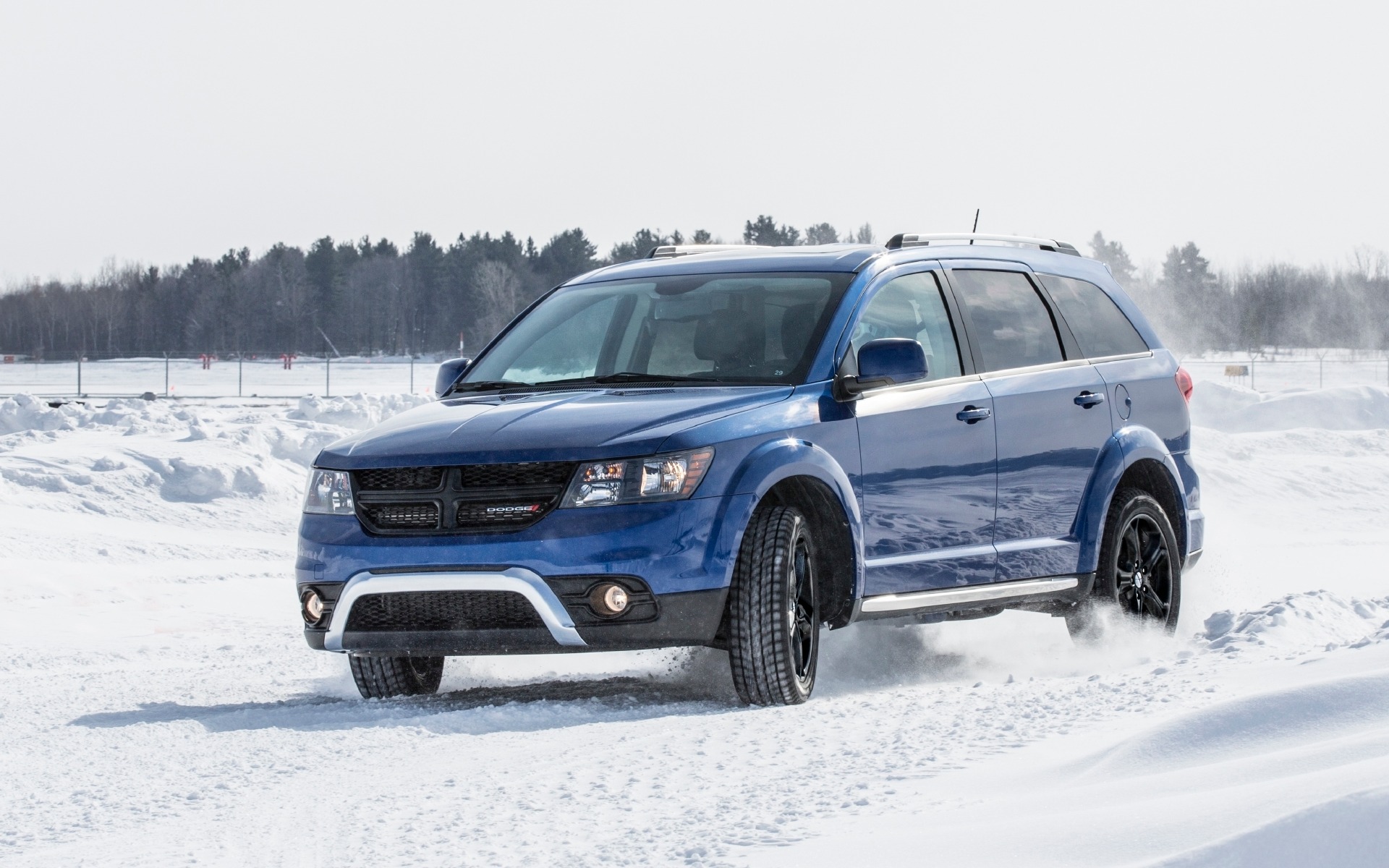Dodge has long played a central role in the American car market, delivering everything from muscle cars and minivans to compact crossovers and rugged SUVs. While the brand is synonymous with bold styling and big power, especially through its HEMI engines and aggressive SRT trims, its reliability track record is more of a mixed bag.
Some Dodge vehicles are long-lasting workhorses, powering past 150,000 miles with only routine maintenance. Others, however, tend to sputter out far earlier, often weighed down by engine problems, weak transmissions, or poor build quality.
In this guide, we’re breaking down five Dodge vehicles known to stand the test of time, followed by five that often start breaking down before they hit 80,000 miles. Whether you’re buying used or simply want to make an informed decision on your next Dodge, here’s what to know.
5 Dodges That Stand the Test of Time
While Dodge doesn’t always land high on reliability rankings, there are standout models in its lineup that owners swear by. These vehicles have proven themselves capable of withstanding daily wear and tear, long-distance travel, and aging gracefully—at least mechanically.
1. Dodge Charger (Post-2011 Models)
After its 2011 redesign, the Dodge Charger became more than just a muscle sedan—it became a well-built, reliable daily driver. It comes with either a V6 (3.6L Pentastar) or V8 (5.7L, 6.4L HEMI), both of which have earned a reputation for durability.
Police departments and high-mileage commuters alike have reported Chargers crossing the 200,000-mile mark with few issues. Its rear-wheel-drive layout, optional all-wheel-drive, and solid eight-speed transmission contribute to its strong reliability record.
Performance is a hallmark of nearly every Dodge vehicle, and the 2013 Charger is no different. The base V6 engine delivers up to 300 horsepower, evoking the feel of a classic muscle car, while the available V8 engines generate either 370 horsepower or an exhilarating 470 horsepower.
Rear-wheel drive provides a handling experience similar to that of high-end European luxury sedans, and for those dealing with challenging weather conditions, all-wheel drive is also an option.
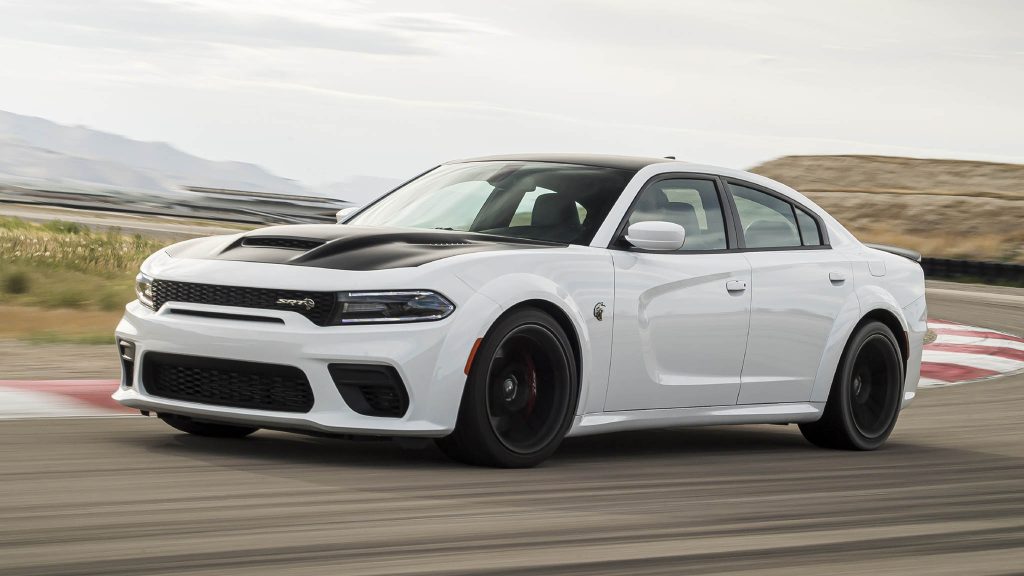
But the Charger isn’t solely focused on performance. With the V6 engine, fuel economy remains strong, especially when matched with the sophisticated eight-speed automatic transmission, which is standard on most Charger versions.
Although the swooping, coupelike roof line slightly limits rear-seat headroom, the interior still offers generous space. It’s also well-appointed, featuring quality finishes and a practical touchscreen interface.
Overall, the Charger stands largely in a category of its own. Apart from the 2013 Chrysler 300, which “largely trades performance for extra luxury,” the only other full-size sedan boasting performance credibility is the 2013 Ford Taurus.
Why it lasts: Proven engine options, strong drivetrain, and fleet-level durability make the Charger a standout.
Also Read: 10 Best Cars That Feel Expensive But Cost Pennies
2. Dodge Grand Caravan (2008–2019)
Though not flashy, the Grand Caravan is a workhorse. Especially from 2011 onward, with the introduction of the 3.6L Pentastar V6, this minivan earned praise for dependability.
While early models had issues with transmission and electronics, later iterations became family favorites for their practicality and resilience. It’s not uncommon to find well-maintained Caravans with 180,000+ miles still in use as family haulers or commercial shuttles.
If nothing else, the 2010 Dodge Grand Caravan has history on its side. After all, Chrysler was the inventor of the minivan, and the “DGC” represents the latest model in a long line of steadily evolving family haulers.
Unfortunately, one area that hasn’t seen improvement in this latest iteration is the interior materials and overall build quality. It’s disappointing that this Caravan isn’t assembled as well as it could be, because in most other respects, it remains a fairly competitive offering.
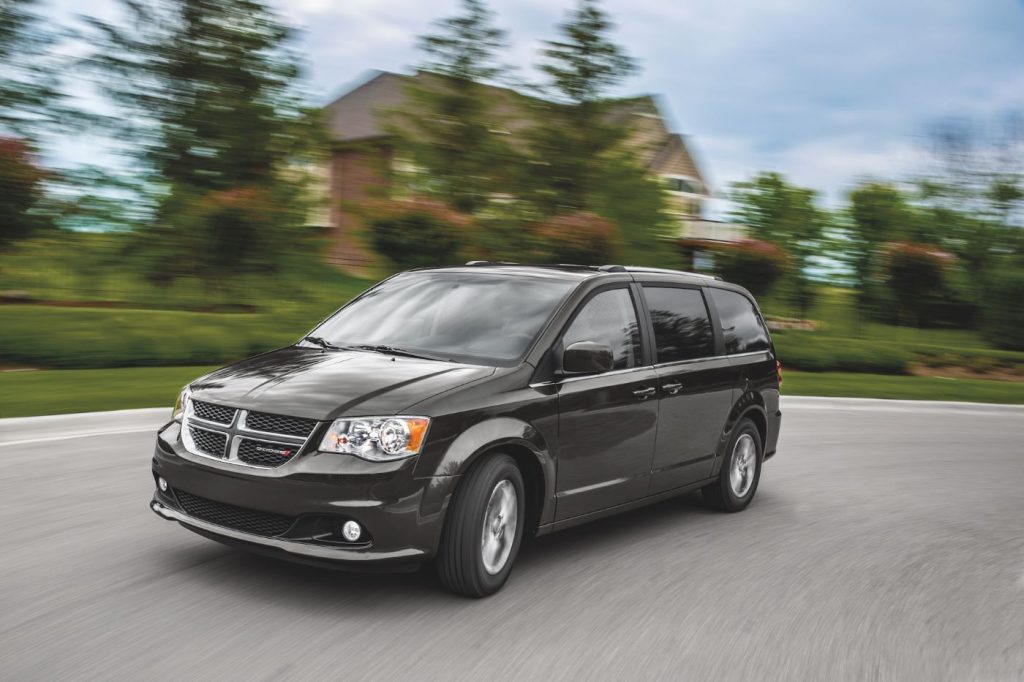
We became very familiar with the current Grand Caravan through our long-term testing program, in which we purchase vehicles and operate them for an entire year to accumulate as many miles as possible. Over the course of a year with a 2008 Grand Caravan, we encountered an unusually high number of quality issues.
These included persistent squeaks and rattles, an unreliable radio, an inconsistent passenger-side sliding door, and rear bumper plastic that warped so badly we couldn’t open the tailgate, dubbed the “failgate” by our team. And it wasn’t just our experience; many consumer reviews of the Grand Caravan echo similar frustrations.
That’s particularly unfortunate, because when evaluating the Caravan based on its performance and available features, it actually performs quite well. The optional Swivel ‘n Go rear captain’s chairs let passengers sit around a table to play cards or chat while on the move.
Additionally, the standard Stow ‘n Go seating system allows both the second-row chairs and third-row bench to fold completely into the floor. Other available features include a dual-screen rear entertainment setup, Sirius Satellite TV, and hard-drive-based audio storage.
Why it lasts: A simplified, tried-and-true powertrain and a reputation for easy repairs.
3. Dodge Durango (2014–Present)
Built on the same platform as the Jeep Grand Cherokee, the third-gen Durango offers muscle and longevity. Both the 3.6L V6 and 5.7L HEMI options have a solid track record.
With proper care, these SUVs often pass 150,000 miles without major issues. The all-wheel-drive systems, towing capacity, and refined interiors make the Durango a top choice for families or weekend adventurers who don’t want a luxury brand’s price tag.
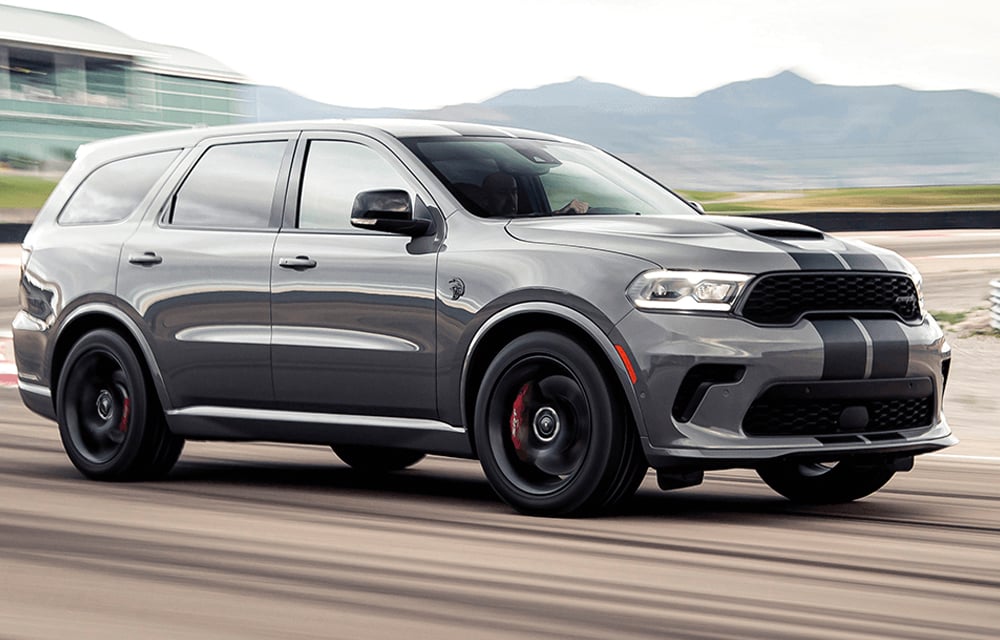
The 2014 Dodge Durango comes available with a choice between a V6 or a V8 engine, and every model is paired with an eight-speed automatic transmission. The SXT trim is offered exclusively with the V6, while the R/T trim is only available with the V8.
However, both the Limited and Citadel trims can be configured with either engine. Depending on the chosen model, buyers can opt for rear-wheel drive, all-wheel drive, or four-wheel drive.
The light-duty AWD system is limited to models equipped with the V6 engine. Meanwhile, the more capable on-demand 4WD system, which includes dual-range gearing for improved off-road performance, comes standard with the V8 engine.
The 3.6-liter V6 engine is rated at 290 horsepower (295 hp with the Rallye package) and 260 pound-feet of torque.
Why it lasts: Proven shared components with Jeep, rugged construction, and strong engines.
4. Dodge Ram 1500 (2002–2008 with 5.7L HEMI)
Before Ram became its own brand in 2009, it was under the Dodge nameplate, and the Ram 1500 of the early 2000s remains a standout for durability. The 5.7L HEMI V8, introduced in 2003, was a game-changer.
It provided serious towing capability and was relatively easy to service. These trucks are still on the road today, frequently topping 200,000 miles.
Between 2002 and 2007, the available V-8 engine was a 4.7-liter, producing 235 horsepower and 295 lb-ft of torque. This engine received an upgrade in 2008, increasing output to 310 horsepower and 330 lb-ft of torque.
For those seeking even more displacement, a 5.9-liter V-8 carried over from the previous generation delivered 245 horsepower and 335 lb-ft of torque.
In 2004, this engine was replaced by a lighter and more fuel-efficient 5.7-liter HEMI V-8, which generated 345 horsepower and 375 lb-ft of torque. Fuel efficiency saw further gains with the introduction of cylinder deactivation technology in 2006.
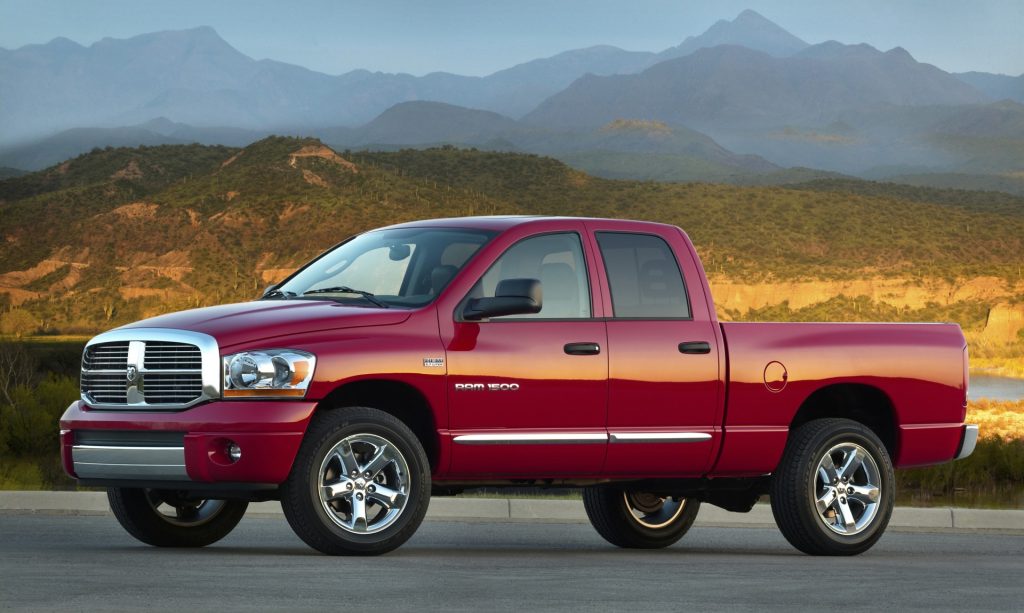
The 4.7-liter V-8 came standard with a five-speed manual transmission, which was upgraded to a six-speed in 2005. A four-speed automatic was offered as an option with the 4.7-liter and came standard with the 5.9-liter engine.
For drivers intent on using as much gasoline as possible, Dodge introduced the SRT-10 variant from 2004 to 2006. It featured the same 8.3-liter V-10 engine found in that “glorious piece of sports car insanity,” the Dodge Viper, and produced an impressive 500 horsepower and 525 lb-ft of torque.
The regular cab version was equipped with a six-speed manual transmission, while the Quad Cab model was paired with a four-speed automatic.
In terms of body configurations, buyers could choose between the two-door regular cab and the four-door Quad Cab, the latter of which featured rear doors that opened in the conventional manner, adding a layer of practicality.
Both owners and automotive reviewers have praised the comfortable seating and noted that the interior design showed clear improvements over earlier models. A spacious Mega Cab variant debuted in 2006, extending the rear seating area by an additional 20 inches.
Why it lasts: A bulletproof HEMI engine and old-school mechanical toughness.
Also Read: Top 10 EV Brands in 2025 That Outsell Expectations
5. Dodge Neon SRT-4 (2003–2005)
Surprisingly, one of Dodge’s smallest cars turned out to be one of its most reliable performance vehicles. The SRT-4 version of the Neon featured a turbocharged 2.4L engine pushing 230 horsepower, backed by a heavy-duty transmission and sport suspension.
Despite being pushed hard by enthusiasts, the SRT-4 has proven resilient, especially when maintained properly and left unmodified.
The sport-compact segment in the U.S. was largely dominated by Japanese and German imports. However, Dodge responded decisively with the Neon SRT4.
During the early 2000s, there was a growing demand for fast, affordable vehicles. The value proposition of performance per dollar became a key factor, and the Dodge Neon SRT4 addressed that need effectively. These cars were inexpensive to purchase and easy to modify, making them highly attractive to enthusiasts.
At first glance, the SRT4’s traditional three-box sedan silhouette could easily be mistaken for an ordinary family sedan. That was certainly true for the standard Neon, but the SRT4 was a different animal entirely.
Its distinctive front fascia made that clear. “A big bumper with a Dodge Viper-like four slots and two round fog-lights were different than the rest of its siblings.”
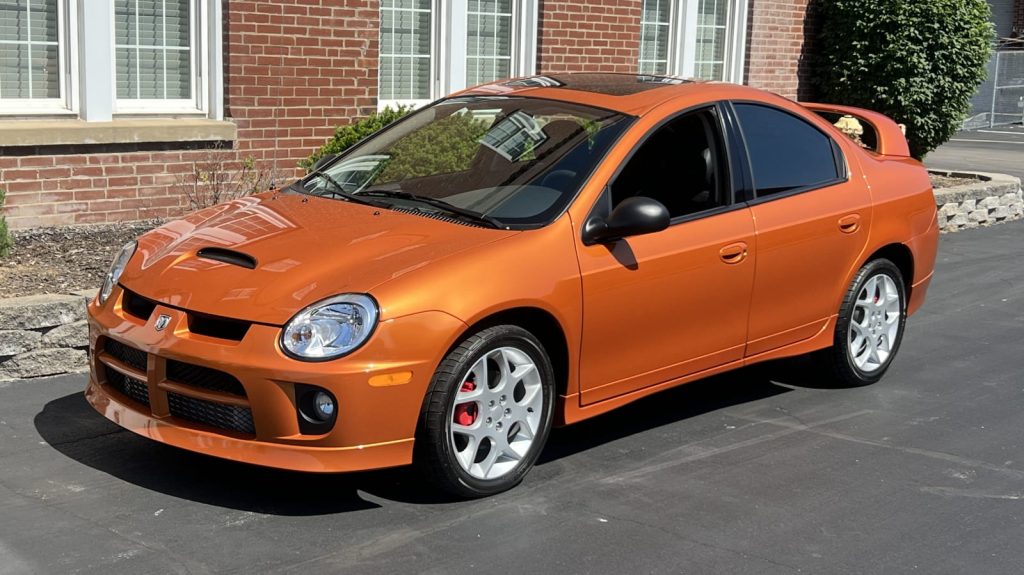
An additional hood scoop served as another clue that this was far from a typical commuter car. At the rear, a large, exaggerated spoiler, more about aesthetics than function, was among the first elements owners tended to replace.
Inside, Dodge’s mission to keep costs down was immediately apparent. Budget-friendly materials were found throughout the cabin. “There was even a factory-installed boost gauge that looked like it was stuck after the car left the factory.”
But Dodge’s objective was clear: to offer a sport-compact car for under USD 20,000, a price significantly lower, and performance far more modest, than rivals like the Subaru Impreza WRX or Mitsubishi Lancer Evo. Standard features were limited; for example, the SRT4 came with power windows only for the front doors.
Beneath the hood, the Dodge Neon SRT4 came equipped with a turbocharged 2.4-liter engine paired with a five-speed manual transmission.
In its first production year, the engine produced 215 horsepower and was coupled with an open differential. Beginning in 2004, output increased to 230 horsepower, and the car received a limited-slip differential to enhance traction and performance.
Why it lasts: Simple, strong turbo engine and limited electronics make it easier to maintain.
5 Dodges That Don’t Make It Past 80K
Unfortunately, not every Dodge model can handle the long haul. Some are plagued by design flaws, poor-quality components, or unreliable transmissions. These vehicles often experience expensive breakdowns before reaching 80,000 miles—making them risky used car purchases.
1. Dodge Journey (2009–2020)
Despite its long run in Dodge’s lineup, the Journey was outdated almost from the start. Early models with the 2.4L four-cylinder engine and four-speed automatic transmission were underpowered and failure-prone.
The interior felt cheap, and electronics were glitchy. By the time newer engines and features arrived, the vehicle’s reputation was already tarnished.
The 2010 Dodge Journey crossover SUV essentially serves as a successor to Chrysler’s now-discontinued short-wheelbase minivans, a family-oriented vehicle that offers more agility and easier handling compared to the full-size Grand Caravan.
In terms of practicality, the Journey effectively fills this gap, delivering ample space for larger families along with a wide array of convenient features and modern technology.
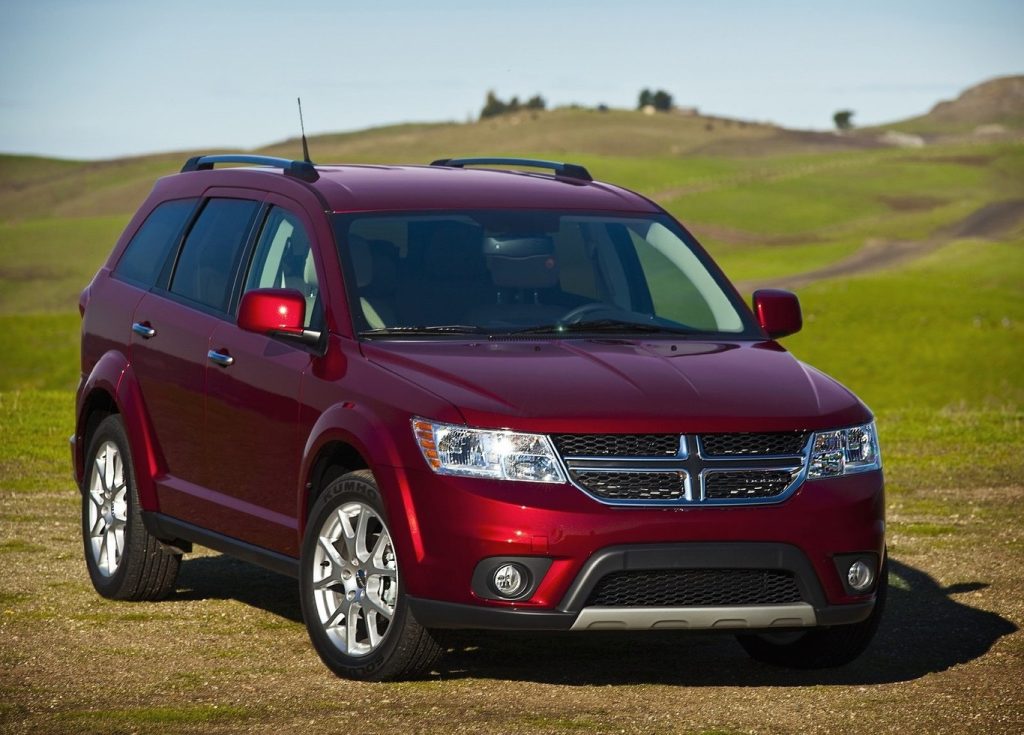
The real question is whether shoppers will find its interior quality and driving experience competitive enough when compared to rival models that continue to evolve. After all, “a journey is hardly worth taking if you’re not going to enjoy the trip.”
Where the Journey truly shines is in the versatility of its cabin, a quality clearly influenced by Chrysler’s expertise in minivan design. With an available third-row seat, it distinguishes itself from other two-row crossovers by offering extra space suitable for children.
Why it fails early: Weak engine options, transmission issues, and poor build quality.
2. Dodge Caliber (2007–2012)
The Caliber was meant to replace the Neon, but it never lived up to the hype. The main issue was its CVT transmission, which was prone to overheating and failure, often before 80,000 miles. The interior materials were subpar, and build quality issues led to frequent rattles, suspension problems, and electrical faults.
The 2007 Dodge Caliber is offered with three different four-cylinder engine choices. The front-wheel-drive SE and SXT trims are equipped as standard with a 1.8-liter four-cylinder engine that delivers 148 horsepower and 125 pound-feet of torque.
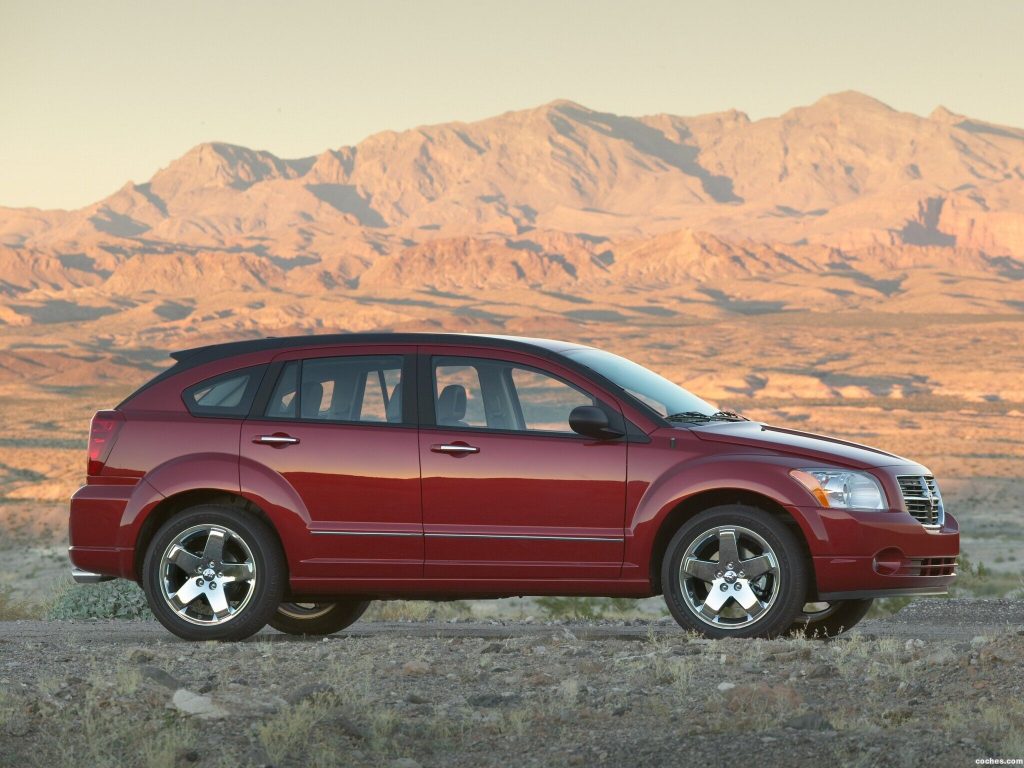
An available upgrade is a 2.0-liter engine, which produces 158 horsepower and 141 lb-ft of torque. The Caliber R/T stands out from the rest of the lineup by offering a 2.4-liter engine rated at 172 horsepower and 165 lb-ft of torque, along with an optional all-wheel-drive (AWD) system.
When it comes to transmissions, the 1.8-liter engine is exclusively mated to a five-speed manual gearbox. The front-wheel-drive version of the R/T also comes with a five-speed manual.
Why it fails early: Fragile CVT, cheap materials, and limited refinement.
3. Dodge Avenger (2008–2014)
The Avenger struggled to compete in the midsize sedan market, and it shows in its reliability scores. Many models had issues with rough transmissions, faulty suspension components, and sluggish engine response.
The base 2.4L engine was noisy and underpowered, while even the available V6 models didn’t escape frequent breakdowns before 100,000 miles.
The midsize sedan category is filled with excellent all-around options, but not every family car is designed to blend in with the mainstream. The 2008 Dodge Avenger is one such vehicle, standing out as the most aggressively styled midsize sedan on the market this year.
“The Avenger’s leering headlights and massive haunches will undoubtedly be off-putting to some shoppers,” but for buyers intrigued by the concept of a “Charger Junior” wrapped in a more fuel-efficient, front-wheel-drive platform, this new Dodge could hold some appeal.
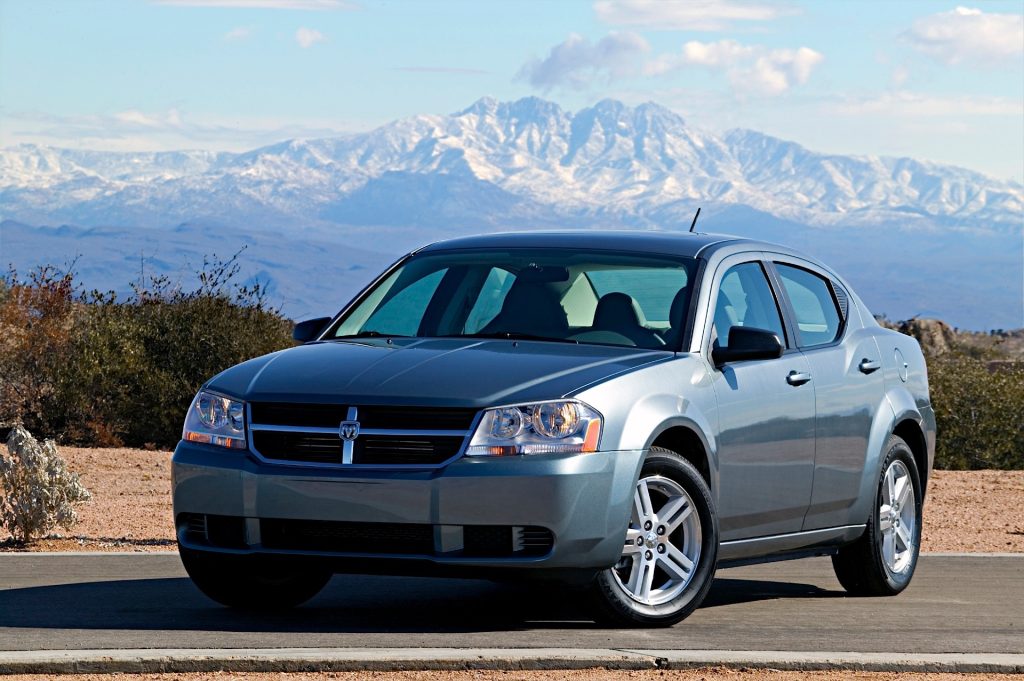
Additionally, thanks to its quiet ride, spacious rear seat, and a robust list of available features, the Avenger provides more than just a bold appearance.
The Avenger nameplate was last used for a midsize coupe based on the Mitsubishi Galant, which Dodge sold from 1995 through 2000.
In its current form, the Avenger replaces the now-defunct Dodge Stratus and is mechanically identical to its corporate cousin, the Chrysler Sebring. Engine offerings include a 2.4-liter four-cylinder with 173 horsepower, a 2.7-liter V6 generating 189 hp, and a 3.5-liter V6 producing 235 hp.
All of these engines deliver respectable fuel economy. The 2008 Dodge Avenger also comes with a diverse selection of features for the segment.
Why it fails early: Subpar engineering, lack of refinement, and premature mechanical failures.
4. Dodge Intrepid (1998–2004)
While the Intrepid had a bold design, the 2.7L V6 engine was its Achilles’ heel. These engines were prone to oil sludge buildup due to poor cooling and design flaws, often resulting in complete engine failure before 80,000 miles. Even when repaired, the same issues tended to resurface.
The second-generation Intrepid has finally arrived. First launched just five years ago, the Intrepid now takes its latest design inspiration from the ESX show car revealed last year.
Originally introduced as a prime example of cab-forward design, the Intrepid has proven successful for Dodge in its relatively brief existence, holding the title of the division’s best-selling car for the past three years.
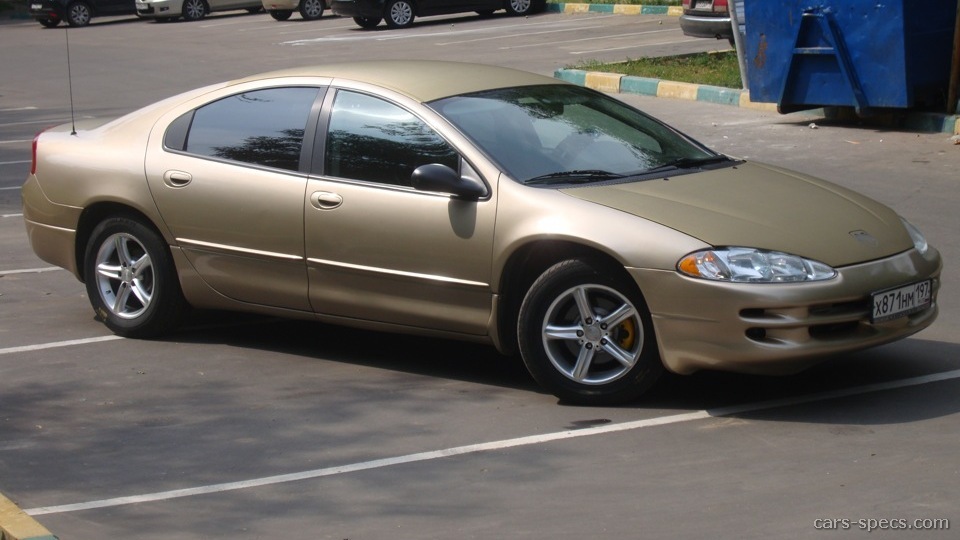
Before the Intrepid’s debut in 1992, no American automaker had mounted a serious challenge to the Ford Taurus, the long-reigning best-seller in the midsize family sedan segment.
While the Taurus continues to perform well in the marketplace, the Intrepid has secured its own space thanks to its appealing styling and spacious interior, establishing a foothold in this highly competitive and contested category.
Why it fails early: Catastrophic engine design flaws, particularly in the 2.7L V6.
5. Dodge Nitro (2007–2012)
The Dodge Nitro looked like a small SUV but drove more like a truck, and not in a good way. The 3.7L and 4.0L engines suffered from timing chain and oil consumption issues. Interior materials wore out quickly, and the ride was rough. Frequent problems with the 4WD system and transmission made it unreliable for long-term use.
The 2008 Dodge Nitro is likely to appeal to those in search of a five-passenger SUV that offers aggressive styling and a practical amount of interior space.
However, buyers who take a closer look will discover that Dodge’s midsize sport-utility vehicle comes up short in several important areas, including fuel economy, handling performance, and overall materials quality.
While most compact and midsize SUVs are shaped with soft curves and rounded edges, the 2008 Dodge Nitro features an assertive, square-jawed design and pronounced wheel arches that make it hard to ignore. This bold, hyper-masculine look is central to its appeal in the under-$30,000 SUV segment.
Another strength of the Nitro is its spacious interior. As a five-passenger SUV, it provides ample room, and features like fold-flat seats and a slide-out cargo floor—called “Load ‘n Go”—enhance its usefulness as a light-duty utility vehicle.
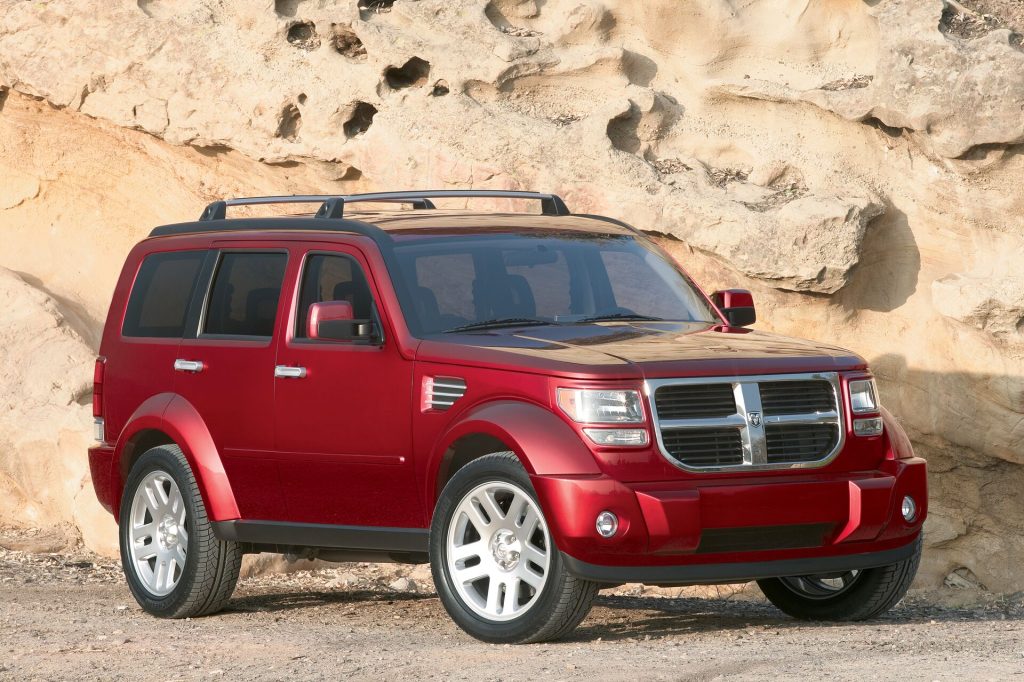
The Nitro’s generous cabin space is made possible by its extended 108.8-inch wheelbase. Though it shares a platform with the redesigned 2008 Jeep Liberty, the Nitro is slightly larger in size.
Like the Liberty, it uses unibody construction, but it includes a live rear axle, standard rear-wheel drive (with an optional dual-range four-wheel-drive system), and a selection of 3.7-liter and 4.0-liter V6 engines.
These rugged features might suggest the Nitro is designed for off-road adventures, but Dodge has actually tuned it for on-road use, as shown by the availability of 20-inch chrome wheels.
Unfortunately, Dodge’s attempt to transform a traditional SUV into a street-friendly crossover isn’t entirely successful. When compared to more refined, car-based crossovers such as the Mazda CX-7, Mitsubishi Outlander, Saturn Vue, and Toyota RAV4, the Nitro lacks both ride comfort and responsive handling.
Its V6 engines also lag behind competitors in terms of refinement and fuel efficiency, and since most rivals are lighter, they tend to be quicker as well. Additionally, many competing models offer interiors with superior build quality and materials.
“Standard on the Nitro SXT and SLT is a 3.7-liter V6 rated for 210 horsepower and 235 pound-feet of torque.” A six-speed manual transmission is included with SXT models by default, while a four-speed automatic is optional for the SXT and standard for the SLT.
The Nitro R/T trim features a 4.0-liter V6 engine that delivers 260 horsepower and 265 pound-feet of torque. This engine is paired exclusively with a five-speed automatic transmission.
Why it fails early: Drivetrain issues, poor interior quality, and mechanical unreliability.
Dodge vehicles can be incredibly fun to drive and offer serious performance, but choosing the right model is crucial for long-term satisfaction. If you’re shopping for a used Dodge, vehicles like the Charger, Durango, or Ram 1500 with the 5.7L HEMI are excellent choices for durability and value.
On the other hand, models like the Caliber, Journey, and Intrepid come with higher risk and should be approached with caution, especially if they’re high-mileage or poorly maintained.

